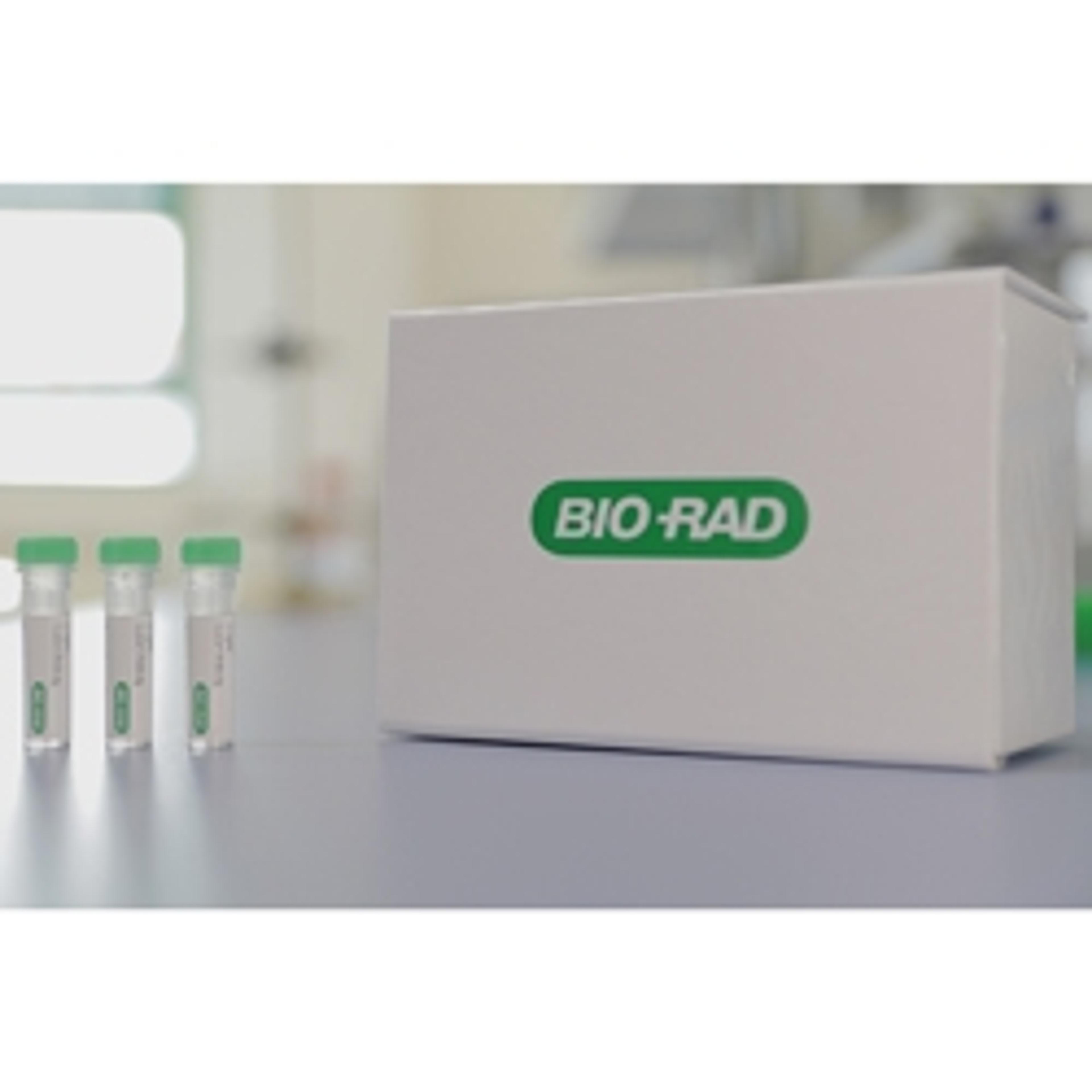Is immunoassay complexity holding you back?
R&D expert Dr. Francisco Ylera shares the secret to fast and flexible formatting of antibodies to accelerate your research
9 Jun 2020
In this SelectScience® interview, we hear from Dr. Francisco Ylera, R&D team leader at Bio-Rad Laboratories, about the complexities and time constraints associated with the design and optimization of conventional immunoassays. To overcome these challenges, Bio-Rad has launched a new modular platform, based on SpyTag/SpyCatcher technology that enables antibody site-directed conjugation, and the assembly of antibodies into many different stable formats.
The technology takes advantage of the spontaneous formation of a covalent bond between a SpyTag peptide and SpyCatcher protein, which are derived from the fibronectin-binding protein of S. pyogenes. Ylera outlines how this technology is now helping scientists overcome some of the hurdles associated with immunoassays and shares his thoughts on future developments.

Tell us a bit about your role at Bio-Rad
FY: I previously worked in the antibody generation and characterization team at Bio-Rad’s custom antibody service group for 12 years, where my role was to plan and design customer projects. Four years ago I was promoted to team leader of a newly founded technology research and development (R&D) team. My specialized team is dedicated to improving our current antibody service platform, with the aim of increasing the value of our antibodies for our customers.
Can you introduce the SpyTag/SpyCatcher technology?
FY: The SpyTag/SpyCatcher technology is based on a fibronectin-binding protein from Streptococcus pyogenes. This protein autocatalytically forms an intrachain isopeptide bond between the sidechains of a lysine and an aspartic acid. It has been shown that after splitting this domain into a small peptide, the SpyTag, and a small protein, the SpyCatcher, both are able to form a covalent bond when mixed. This reaction is rapid, quantitative, specific, and exceptionally robust in terms of buffer conditions and additives. We have applied the SpyTag technology to the Human Combinatorial Antibody Libraries (HuCAL®) recombinant antibody platform, introducing completely new versatility.
How has Bio-Rad incorporated SpyTag into recombinant HuCAL antibodies?
FY: HuCAL is one of the most commercially successful human Fab antibody phage display libraries. We specifically use this library to generate custom monoclonal antibodies for many research and diagnostic applications. One advantage of recombinant antibodies is the easy genetic modification of the antibodies after the selection process. The resulting Fab fragments can be converted into a range of different antibody formats, including mono- or bivalent Fab fragments with a variety of different tags, and immunoglobulin (Ig) formats, including human IgGs, IgA, IgE or IgM, and chimeric antibodies with a constant region from mouse, rat, or rabbit. We have built a modular antibody platform by incorporating the SpyTag technology into our antibodies. Using a SpyTag antibody with a suite of modified SpyCatchers enables site-specific conjugation, or fast conversion from monovalent to bivalent or multivalent Fabs, and the generation of synthetic IgGs within just one hour.
What are the challenges your customers are facing and how do the SpyTag-enabled antibodies help overcome them?
FY: A directly labeled antibody, e.g. to biotin, horseradish peroxidase (HRP) or a fluorophore, is desirable for use in many applications. However, protocols can be complex and time consuming, and conjugation is highly antibody specific. If the label attaches at or near the antibody-antigen binding site it can lead to loss or reduction of antibody function. Site-directed conjugation of a SpyTag-enabled antibody to a SpyCatcher already conjugated with the desired label can be done in one hour, resulting in a consistent degree of labeling, and eliminating the risk of loss of functionality. Recombinant antibodies can be converted to different formats using simple subcloning steps followed by expression and purification. This method is well established but can take several weeks to achieve. Using the simple SpyTag/SpyCatcher coupling reaction, Fab fragments can be converted into all kinds of antibody formats. One batch of purified Fab-SpyTag antibody can give rise to a multitude of different antibody formats in one hour, speeding up the process of testing and selecting the best format for each individual assay.
How can antibodies be assembled into different formats using your technology, and what are the advantages?
FY: We have generated a range of SpyCatchers for format conversions. We started with a SpyCatcher dimer, which we call the BiCatcher, to form bivalent Fab fragments. This means it is possible to use the same antibody in different formats based on suitability for the application, e.g. use the monovalent format for intrinsic affinity determination, and a bivalent format in a Western blot to take advantage of avidity effects. The conversion and experiment can be achieved on the same day since the SpyTag/SpyCatcher coupling reaction takes only one hour. We have also generated a SpyCatcher-Fc fusion protein, named FcCatcher, for those assays that require an Fc domain. These FcCatchers are produced by mammalian expression, and currently we offer human IgG1, IgG2, 3, and 4, IgG4-Pro and IgA-FcCatchers for coupling. For those researchers who prefer to use their established anti-Fc secondary reagents, we offer a mouse IgG2a and a rabbit IgG-FcCatcher. These can also be used for multiplexing purposes by coupling each antibody to a different FcCatcher and then employing up to three different species-specific anti-Fc secondary antibodies.
What are the advantages of site-specific conjugation of antibodies?
FY: Several applications require or benefit from conjugated antibodies, such as a biotinylated or HRP conjugated detection antibody for a sandwich assay. These conjugations are conventionally achieved via the random reaction of a label with the primary amines of the antibody. This process results in a fraction of the antibodies that carry a label at the antigen-binding site, and thus cannot bind to the corresponding antigen. As a result, only a fraction of the antibody is functional and in the case of an IgG, still bivalent. The degree of labeling follows a distribution curve that not only means each antibody carries a varying number of labels at different positions, but also that a new batch is likely to vary in the degree of labeling from the last. Site-specific conjugation through SpyTag/SpyCatcher coupling avoids this drawback since the labeling always takes place by coupling the conjugated SpyCatcher to the SpyTag located at the C- terminus of the heavy chain.
We have modified both the SpyCatcher and the BiCatcher to facilitate site-specific labeling of the Catchers, which consistently results in a fixed degree of labeling. Ultimately, coupling these Catchers with our antibodies gives a product with a fixed number of labels at a defined position. The labeling of an antibody simply requires mixing the antibody and Catcher together and leaving them to sit at room temperature for one hour.
What do you see as the future developments in this area?
FY: Currently, we offer the SpyTag/SpyCatcher coupling as a service for our custom antibody projects. Our aim is for the modular antibody platform to serve as a versatile tool, enabling our customers to use the most suitable antibody formats for each of their experiments. We are planning to provide our customers with full flexibility and versatility by launching all of our SpyCatchers for DIY coupling, as well as introduce the SpyTag to our catalog antibodies to give access to all the conjugates for which we have generated SpyCatchers. We believe our customers will benefit from the advantages of this technology, through the design and optimization of robust immunoassays with reproducible and translatable results, enabling them to achieve their goals.

